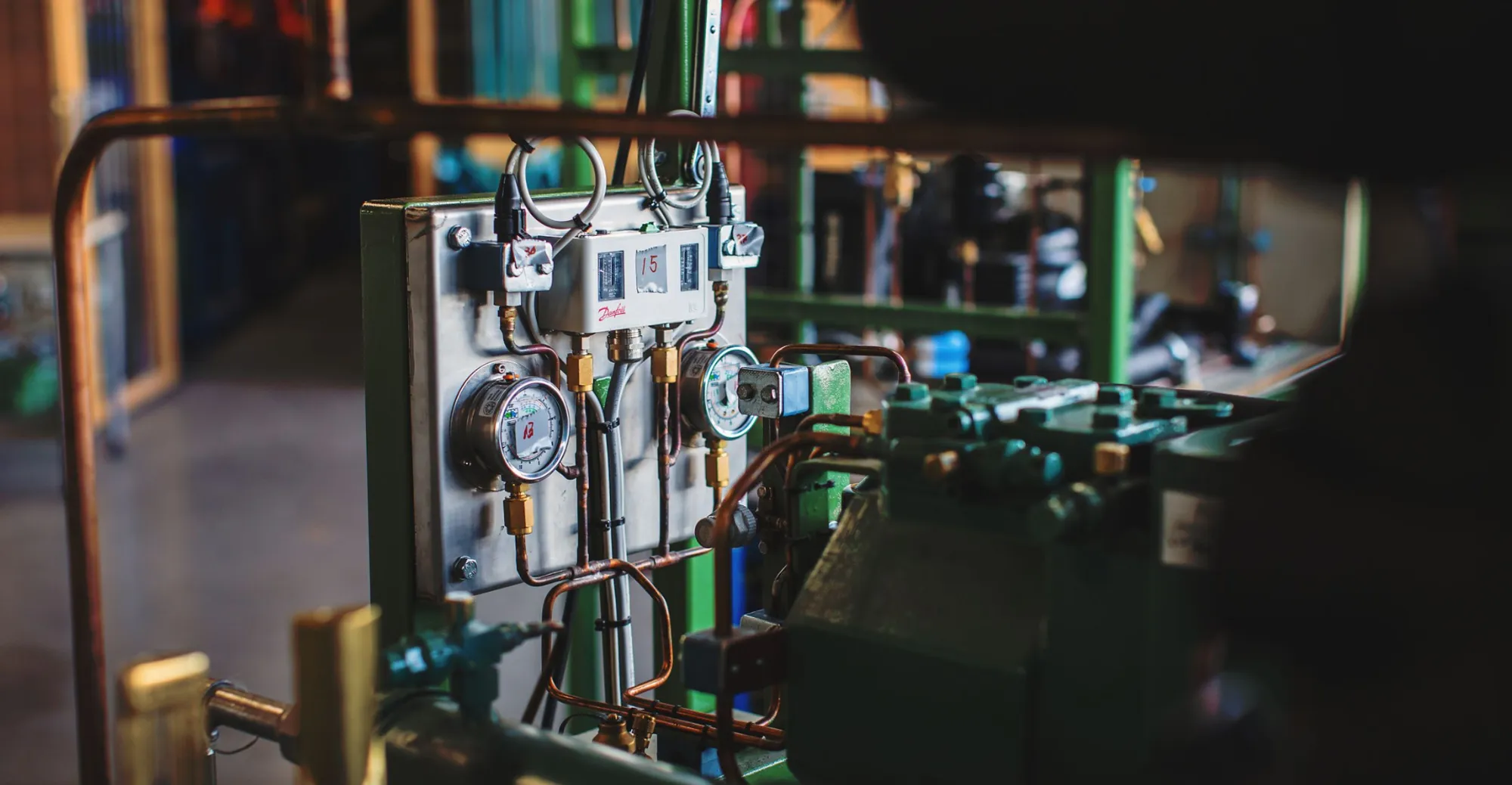
How to check your AC-freon level?
– by Albrand Veldhuizen, 12/05/20
Fifteen minutes is all it takes to discover if you have enough refrigerant in your system, even if you’re not an f-gas certified service engineer.
Condition of your system
Subcooling and Superheating are two key terms in cooling techniques. All mediums condensate or evaporate at a certain temperature and pressure.
For example, water at sea level condensates/evaporates at 100°C. To be sure that everything is evaporated in a cooling circuit, set the temperature a little higher, such as 110°C. This temperature difference of 10 Kelvin is called superheating.
The same goes for condensation. To make sure all the gases condensate, set the temperature a fraction lower to 95°C.
As a rule of thumb, the temperature difference for superheating and subcooling must be respectively around 10 Kelvin and 5 Kelvin.
If there is too much superheating and too little subcooling; then there is not enough refrigerant in the system. It also works the other way around. Too much subcooling and too little superheating, then there is too much refrigerant in the system.
Five easy steps
To calculate subcooling and superheating you need a:
- Digital thermometer
- Refrigerant slider
- Pen & paper.
Step 1) Determine the refrigerant type
Check out the type plate on your installation which contains information such as the installation number, number of circuits, global warming potential and refrigerant type.
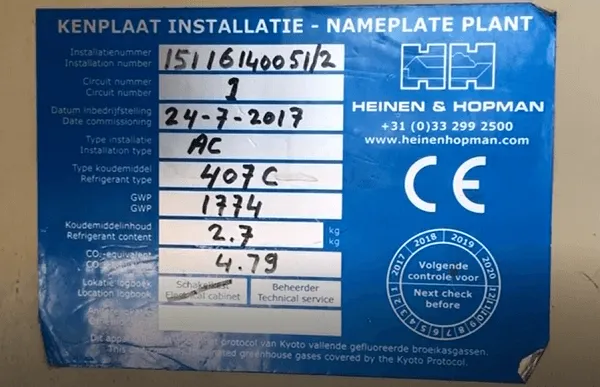
Image 1: Type plate
The example type plate above shows that this system contains the refrigerant R407C.
Step 2) Check pressure
Almost every system Heinen & Hopman delivers is equipped with pressure gauges, indicating the suction and discharge pressure, or low and high pressure.
If your system is not fitted with the gauges you can find the suction and discharge pressure in the documentation.
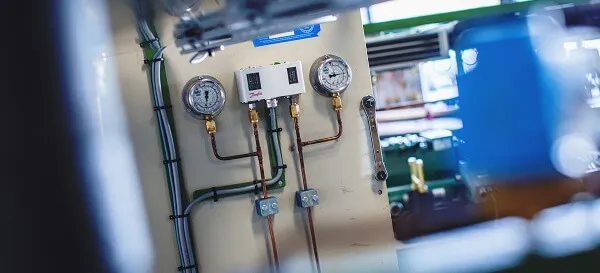
Image 2: Pressure indicators
For this example, we take a suction and discharge pressure of 4.4 bar and 15 bar.
Step 3) Determine condensation/evaporation temperature
The refrigerant has different condensation and evaporation temperatures at different pressures. A refrigerant slider is used to determine these temperatures.
If you don’t own one, you can download the Danfoss refrigerant slider in the Appstore and Google Play. Or try the web version of the tool.
Set the right refrigerant (R407C in our case). The images below are taken from the web version.
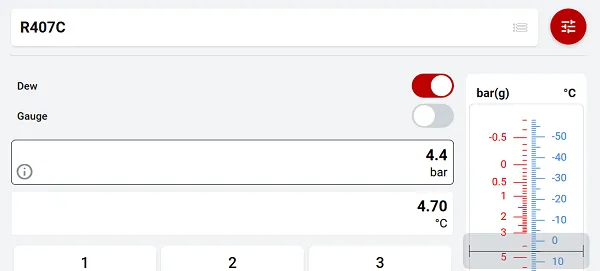
Image 3: evaporation temperature
To calculate the evaporation temperature, set the slide on ‘dew’ and type in the low pressure. The second box shows the corresponding evaporation temperature.
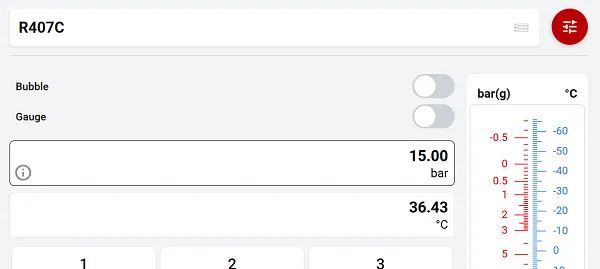
Image 4: condensate temperature
To calculate the condensate temperature, set the slide on ‘bubble’ and type in the high pressure. The second box shows the corresponding condensate temperature. Write down these temperatures.
Step 4) Measure the temperature on your installation
Use a digital thermometer to measure the temperatures on the installation.
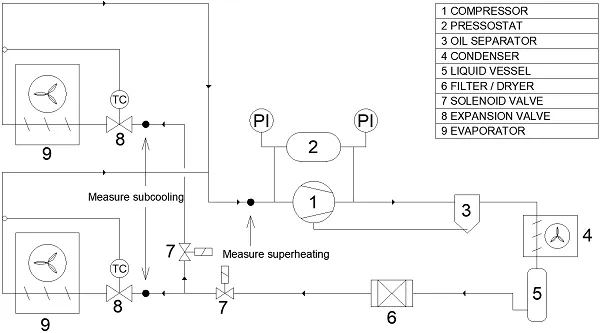
Image 5: scheme installation
Start with superheating, which can be measured on the suction pipe just before the compressor inlet. Subcooling is measured just before the expansion valve.
| Temperature suction pipe before compressor | 15°C |
| Temperature discharge pipe before expansion valve | 30°C |
Step 5) Calculate subcooling and superheating
Now we have all the data we need to calculate the subcooling and superheating.
Superheating = temp. suction pipe – evaporation temp.
Subcooling = condensation temp. – temp. discharge pipe
Following the data, we have found this gives us the following:
Superheating = 15 – 4.7 = 10.3K
Subcooling = 36.4 – 30.5 = 5.9K
Conclusion
Are the temperatures within the 10K and 5K range? Then your system is operating with the right amount of coolant. If not, you probably need someone to check it out. You can of course wait until the low-pressure alarm starts but by then you’re definitely too late.
The filling and emptying of an installation with refrigerant may only be carried out by certified personnel.
Please contact one of our engineers if your refrigerant level is insufficient or you have any further questions about superheating and subcooling.
Albrand Veldhuizen | Commissioning Engineer
Albrand has been working at Heinen & Hopman since 2006. He has worked himself up to the position of Commissioning Engineer and nowadays he is stationed at one of the largest yacht builders in Germany. During his many years working onboard numerous luxury yachts, he has developed a great expertise in HVAC systems for superyachts.